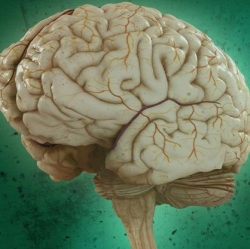
This represents a significant advance in MRI sensitivity. Current MRI techniques commonly used in medical imaging yield spatial resolutions on the millimeter length scale, with the highest-resolution experimental instruments giving spatial resolution of a few micrometers.
“Our approach brings MRI one step closer in its eventual progress toward atomic-scale imaging,” said U. of I. physicist Raffi Budakian, who led the research effort.
The new breakthrough technique introduces two unique components to overcome obstacles to applying classic pulsed magnetic resonance techniques in nanoscale systems:
A novel protocol for spin manipulation applies periodic radio-frequency magnetic field pulses to encode temporal correlations in the statistical polarization of nuclear spins in the sample.
A nanoscale metal constriction focuses current, generating intense magnetic-field pulses.
In their proof-of-principle demonstration, the team used an ultrasensitive magnetic resonance sensor based on a silicon nanowire oscillator to reconstruct a two-dimensional projection image of the proton density in a polystyrene sample at nanoscale spatial resolution.
“We expect this new technique to become a paradigm for nanoscale magnetic-resonance imaging and spectroscopy into the future,” added Budakian. “It is compatible with and can be incorporated into existing conventional MRI technologies.”
